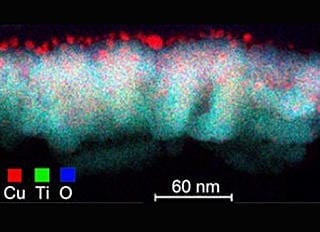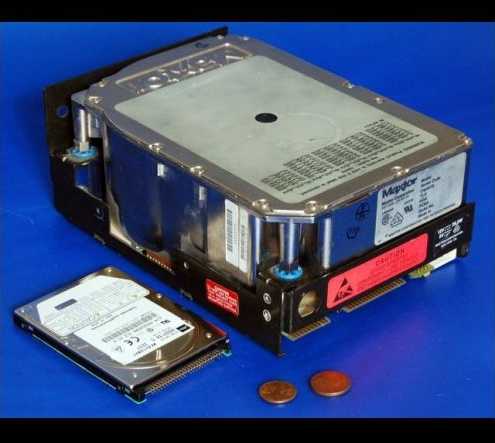
THERE is an indisputable elegance to the idea of transforming garbage into fuel, of turning icky, smelly detritus into something valuable.
But big drawbacks have prevented the wholesale adoption of trash-to-gas technology in the United States: incineration is polluting, and the capital costs of new plants are enormous. Gasification systems can expend a tremendous amount of energy to produce a tiny amount of electricity. Up to this point, it hasn’t seemed worth the trouble.
Mike Hart thinks that he has solved those problems. In a former Air Force hangar outside Sacramento, his company, Sierra Energy, has spent the last several years testing a waste-to-energy system called the FastOx Pathfinder. The centerpiece, a waste gasifier that’s about the size of a shower stall, is essentially a modified blast furnace. A chemical reaction inside the gasifier heats any kind of trash — whether banana peels, used syringes, old iPods, even raw sewage — to extreme temperatures without combustion. The output includes hydrogen and synthetic natural gas that can be burned to generate electricity or made into ethanol or diesel fuel. The FastOx is now being prepared for delivery to Sierra Energy’s first customer: the United States Army.
Ethanol has long been promoted as an alternative fuel that increases energy independence, and federal law requires the use of greater amounts of it. But most ethanol in this country is produced from corn or soybeans, and many people worry that the mandate is pushing up food prices. Ethanol produced from trash — or agricultural waste, as others are trying — would allay such concerns.
Ineos Bio, a Florida company, announced last month that it had produced ethanol from gasified wood waste, using a method that it expects to be commercially viable, and KiOR Inc. will make one million to two million gallons of diesel and gasoline this year from wood waste at its plant in Columbus, Miss., according to Michael McAdams, president of the Advanced Biofuels Association. Mr. Hart said Sierra Energy’s technology should be complementary with the Florida company’s; the FastOx turns all municipal waste, not just wood scraps, into a gas that Ineos Bio could then transform into ethanol.
The FastOx gasifier is the brainchild of two former engineers at Kaiser Steel, patented by the grandson of one of them and commercialized by Mr. Hart. “It’s a modular system that can be dropped into any area,” Mr. Hart said, “using waste where it’s produced to make electricity where it’s used.” Once it’s off the ground, he said, “garbage will be a commodity.”
From concept to construction, the story of the FastOx is of one fortuitous accident after another. And while Sierra Energy has not yet proved to be a successful company — it will be a long while before your garbage is shoveled into a FastOx — its system has become the first waste-to-energy technology acquired by the Defense Department, which paid $3 million for it through an environmental technology program. (The California Energy Commission, which supports renewable energy development in the state, also gave Sierra $5 million, to cover the portion of Sierra’s costs that the Pentagon couldn’t.)
The military is looking for ways to reduce its oil consumption, and to make it easier to supply the front lines with the fuel it uses in all its vehicles and generators. “These days, the supply lines are in the battlefield,” said Sharon E. Burke, the assistant secretary of defense for operational efficiency plans and programs. “And we consume a lot of fuel, which makes us a big target.”
MIKE HART got into the energy business by way of a train. In 1993, he bought the Sierra Railroad, a small freight and tourism line in Northern California. During the California blackouts of 2001, he had an idea: “As the lights were going out, I realized every one of my locomotives creates 2.1 megawatts of electricity,” he said — enough to power many hundred homes. “It’s a rolling generator, and inexpensive.”
The Latest Bing News on:
Trash Into Gas
- UPDATE: Car slams into Connor Child Health Pavilion at Dayton Children’son April 27, 2024 at 8:23 pm
A car reportedly crashed into a building near Dayton Children’s Hospital Saturday. Around 9 p.m. Dayton police and medics were called to 1 Childrens Plaza, Dayton Children’s Hospital, for reports of a ...
- Opinion: Trash tax will add strain to residents, businesses at worst possible timeon April 25, 2024 at 10:35 am
Like most in Michigan, businesses don’t want to hear about COVID-19 anymore, and we’re glad to be at a point where the health threat is largely contained. But the pandemic was always a dual public ...
- UK researchers study turning solid waste into aviation fuelon April 25, 2024 at 7:23 am
In a move towards sustainable energy and waste management, the University of Kentucky has launched a pioneering research initiative that seeks to turn everyday trash into high-quality sustainable ...
- City provides tips to reduce windblown trashon April 24, 2024 at 5:46 pm
The City of El Paso Environmental Services Department (ESD) is asking residents to help reduce windblown trash by not rolling their recycling bins to the curb on ...
- New Delhi chokes as trash mountain fire spreads hazardous fumeson April 23, 2024 at 3:04 pm
India’s capital choked on toxic fumes Tuesday, as a thick and pungent haze spread from a fire at a towering trash dump, the latest in a series of landfill blazes that authorities have struggled for ...
- Man charged with felony for setting fire to Walgreens trash canon April 23, 2024 at 8:42 am
NASHVILLE, Tenn. (WKRN) — A man faces a felony charge after setting fire to a trash can outside a West Nashville Walgreens. According to Metro Nashville police, officers were called to the drugstore ...
- Employees with Port of Milwaukee collect trash on Earth Dayon April 23, 2024 at 7:07 am
Easel is a new startup that sits at the intersection of the generative AI and social trends, founded by two former employees at Snap. There’s a reason why I mentioned that the c ...
- Roanoke Valley landfill readying for natural gas productionon April 22, 2024 at 2:00 am
Biogas collected from inside the regional landfill is burned on site to reduce greenhouse gas pollution, but work is underway to instead harvest and convert that byproduct into usable energy.
- Don't Trash This S&P 500 Stock Of The Day With A Clean Gas Smellon April 18, 2024 at 12:36 pm
Republic Services boasts relative strength and is near a buy point. The IBD Stock Of The Day has a clean chart and business plan.
- Hagerstown residents could see trash fees go up; trash must fit in new cans as of July 1on April 17, 2024 at 2:11 am
Hagerstown officials are considering raising the trash collection fee to help cover the costs of a new, pricier contract with Waste Management.
The Latest Google Headlines on:
Trash Into Gas
[google_news title=”” keyword=”Trash Into Gas” num_posts=”10″ blurb_length=”0″ show_thumb=”left”]
The Latest Bing News on:
Garbage into fuel
- How waste plastic is converted into fuelon April 26, 2024 at 9:38 am
Discover the game-changing HiCOP method, turning plastic waste into valuable crude oil, leading the charge towards a cleaner, greener future!
- New EPA rules will force fossil fuel power plants to cut pollutionon April 26, 2024 at 2:55 am
The U.S. Environmental Protection Agency on Thursday released a sweeping set of rules aimed at cutting air, water and land pollution from fossil fuel-fired power plants. Environmental and clean energy ...
- UK researchers study turning solid waste into aviation fuelon April 25, 2024 at 7:23 am
In a move towards sustainable energy and waste management, the University of Kentucky has launched a pioneering research initiative that seeks to turn everyday trash into high-quality sustainable ...
- Let's not trash recycling technologies that could end plastic wasteon April 25, 2024 at 4:31 am
Some environmental campaigners claim that attempts to create a circular economy for plastics are doomed to fail – but the arguments can be disingenuous ...
- Polk County trash-collection fees projected to rise more than 63% in Octoberon April 24, 2024 at 2:21 am
The current fees charged to Polk County customers are based on 2015 contracts, and haulers' expenses have risen since then.
- Turning human waste into jet fuel Firefly boasts Wizz Air as partneron April 19, 2024 at 8:45 am
UK startup Firefly has announced its intention to commercialize a unique pathway to SAF production. Wizz Air is a partner.
- Garbage could replace a quarter of petroleum-based jet fuel every yearon April 18, 2024 at 12:47 pm
Every year, the nation's aviation industry uses around 22 billion gallons of jet fuel, which produces about 1 billion tons of carbon dioxide—or 3% of the world's carbon dioxide emissions. Because of ...
- Garbage could replace a quarter of petroleum-based jet fuel every yearon April 16, 2024 at 5:01 pm
One way to reduce emissions? Reuse society’s waste and turn it into sustainable aviation fuel (SAF). In a new paper, a team of researchers from the Department of Energy’s Pacific Northwest ...
- Trash to treasure—Researchers turn metal waste into catalyst for hydrogenon April 16, 2024 at 12:00 pm
Scientists have found a way to transform metal waste into a highly efficient catalyst to make hydrogen from water, a discovery that could make hydrogen production more sustainable.
- Wizz Air commits to cutting-edge eco-friendly fuel made from human wasteon April 16, 2024 at 6:49 am
Firefly’s innovative technology not only recycles waste but also promises to reduce lifecycle emissions by 100,000 tonnes of CO2-equivalent per year for Wizz Air. This development is particularly ...
The Latest Google Headlines on:
Garbage into fuel
[google_news title=”” keyword=”garbage into fuel” num_posts=”10″ blurb_length=”0″ show_thumb=”left”]









